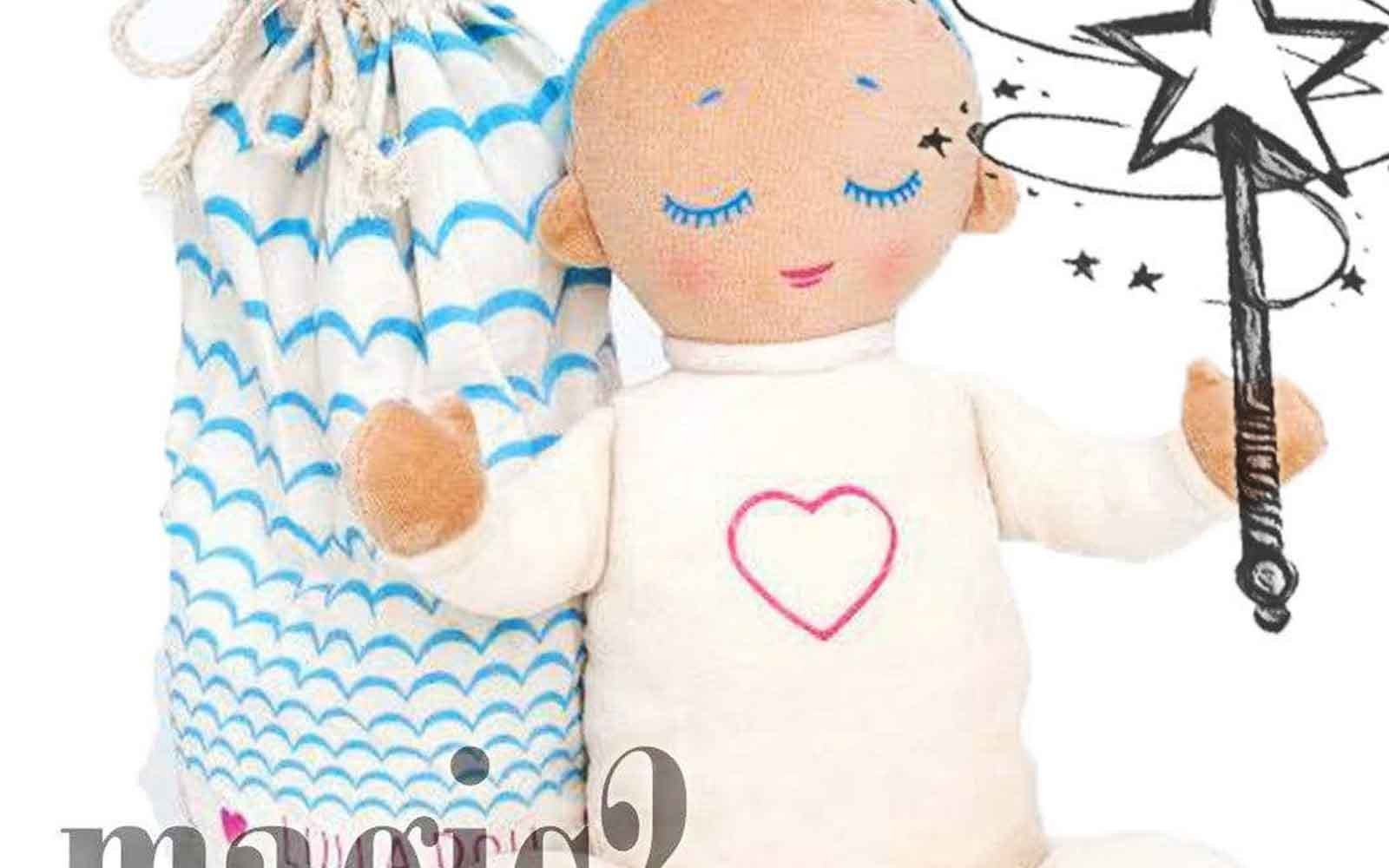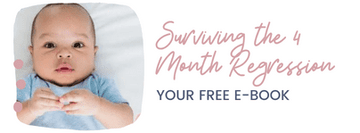
Lulla reviewed: Does the Lulla doll really work?
Lulla is pretty much the most famous baby sleep product ever invented. The concept behind her design is quite incredible, she is very unique - SHE BREATHES - and let's not forget the fact that trillions of mothers and fathers are boasting about how their terrible sleeper started sleeping all night long the second they laid eyes on Lulla.
Does the Lulla doll really work?
So you purchase her, put her in your baby’s cot and your baby hates it. He doesn’t sleep better. In fact, he sleeps worse.
You give it a week. You give it two weeks. But you’re back to square one and a lot poorer for it.
Why did all these other parents have such success and you are STILL left with a baby who only wants to sleep on you/with you/not at all??
When the Lulla doll doesn’t work
Let’s go back to the start and talk about baby sleep.
Hopefully you’ve read our other articles on this delicate topic, especially The most common baby sleep myths, Sleeping like a baby and navigating the 4 month sleep regression so you’ll have a fair understanding of the basics around how babies “learn” to go to sleep.
You CAN have a better night’s sleep!
Whatever your current sleep situation, we've got the tools, the information and the personalised support to help you and your little one reclaim those nights.
Choose your Sleep Solution
I’ll recap it here in any case:
Babies rely heavily on you to teach them the process of going to sleep once they reach around 3 or 4 months old. Some babies this age won’t just fall asleep when they’re tired. Some babies this age will catnap in short stints all day. Some babies this age will sleep all day if you’ll let them and then want to party all night. Fostering good sleep habits in your baby from a young age is crucial for them to learn how to go to sleep and stay asleep.
You’ll have heard a lot about self-settling. Especially in relation to babies 4 months plus. Babies this age have experienced a change in the way their brains operate for sleep, meaning they start rousing fully between sleep cycles in the day and overnight (35-45 minutes in the day and every 2 hours overnight). Until a baby learns to fall asleep and resettle between cycles on their own, they can start catnapping and waking more frequently in the night. Lulla will not solve self-settling issues on her own.
You’ll have heard a lot about sleep associations. These are the things in a baby’s sleep environment that they associate strongly with sleep; cues or clues that tell a baby that sleep is approaching. If your baby’s sleep cues are dependant on you, they’re going to need you to give them the cues again when they naturally wake between sleep cycles. Feeding to sleep, patting and rocking are the most common parent-dependant sleep associations. In older babies, waking multiple times a night for milk or to come into your bed becomes a night-time sleep association or habit which is then reinforced. They are, in a sense, rewarded for their waking, so they’ll continue to do it. It’s all they know and they are getting a positive result. Lulla will not solve night waking issues on her own.
How Lulla will work best
Unfortunately, Lulla is not a miracle product that can solve these issues on her own. If your baby is used to being fed to sleep, putting a Lulla doll in her cot after you’ve fed her to sleep has done nothing to change her sleep habits. If your baby is waking in the night and you’re giving her Lulla after you’ve let her come into your bed, it will do nothing to change her sleep habits. Giving your baby a Lulla instead of feeding her to sleep or instead of bringing her into your bed is a better place to start. You’re starting to break the existing sleep association or stop reinforcing a sleep habit. (If only it was that easy!)
Like any sleep product, like any product at all really, Lulla is only as effective as how she’s used. It’s not the product but its use that will make a difference.
Say goodbye to sleepless nights.
Join over 800,000 families worldwide who are enjoying excellent sleep with our Sleep Programs, created by experts in the field of pediatric sleep.
Choose your Sleep Solution
Let's think of Lulla with this analogy: buying a gym membership and having the card in your wallet won’t make you lose weight. (Believe me, I’ve tried!) You still need to put in the hard work, change your eating or exercising habits, be consistent in your training and wait for a while before you see a change. You DO need to work at it. Having the gym membership will definitely help you lose weight, but it’s not the only factor in the process.
Lulla works in this way too, the same as any positive sleep association (lovies, swaddles, sleeping bags, white noise). Just by having the doll in the cot or bed with your baby or toddler isn’t going to be as effective as you working alongside the Lulla to change existing sleep habits.
So how do you get the magic out of the doll?
If your baby is a poor sleeper, day or night (or both), the first thing you NEED to do is get them in a good sleep rhythm/pattern. This will take out the guesswork and ensure their feed and sleep needs are met in the day, in the exact amounts, to allow them to nap well and sleep well overnight. Having the right amount of day sleep to promote good night sleep is the most crucial step towards good sleep habits forming. Trying to put an over or under tired baby to bed isn’t going to work, no matter what sleep product you’re using!
Once your baby is in a better rhythm to their day, Lulla can come in. Assuming your baby isn’t genuinely hungry and their room is all set up for sleep, you can introduce Lulla as a positive, baby-controlled sleep association. She will work best as a strong signal to your baby that it’s time for sleep. Her sound, her smell and the look of her will become as familiar to your baby as their cot or their swaddle. Lulla’s makers have ensured she’s made out of a soft fabric that will absorb your scent, so for those babies who have a very strong parent-association with sleep, carrying Lulla down your top or having her in bed overnight with you for a day or so will smother her with your unique scent. This will be extra comforting to your wee one.
For older babies, or babies who have a very strong parent-controlled sleep association, Lulla will need to be used alongside some gradual sleep training to wean your baby off their existing methods of going to sleep. We recommend one of our age-specific Sleep Programs, which contain several gradual methods to teach your baby to self-settle without using "cry-it-out".
Let's get your little one's sleep sorted ASAP!Our award-winning Sleep Programs will solve your baby's sleep challenges in no time. Take advantage of our new low prices while they last!
Choose your Sleep Solution
The key for any Lulla Magic, is to use her for all your baby’s sleeps - in the day and at night. Keep her near their bassinet/cot/bed so she’s less of a toy and more of a sleep connection. Create a little routine with her; do your usual bedtime routine of bath/pjs etc, bedtime feed in a dimly lit room, cuddle and a song, then pop your baby into her bed and give her Lulla. Introduce a special sleep phrase such as “it’s sleepy time now” and repeat this a couple of times as you give your baby the doll. Repeating these steps in the process, in the same order, every night, will create a solid chain of events in your baby’s brain, the end event being sleep.
Lulla won’t work instantly. Especially if your baby has a very ingrained existing sleep association. Even if all the other factors are all lined up. But babies are quick learners and given the chance to succeed, they will cotton on VERY fast. It’s our job to give them the best possible chance to develop those good habits.
Here are some of our top tips for giving your baby or toddler the best chance to sleep well:
- Have your baby following our Sleep Programs to ensure napping and feeding is spot on for their age
- Make sure their room is dark for all naps and at night time for babies under 18 months old
- Use white noise for babies under 12 months old and our Baby Sleep Shhh audio track for young babies
- Swaddle babies under 4 months
- Aim for your baby to sleep in their own bassinet/cot/bed for at least one nap a day
- Put your baby to bed awake and give them the chance to learn to go to sleep by themselves (for babies older than 4 months)
- Settle your baby to sleep in their bassinet/cot for babies younger than 4 months, so they learn that is where they settle and sleep
Is Lulla safe?
Lulla comes with velcro attachments so she can be kept outside the cot, as this is recommended for babies for SIDS safety reasons.
--------------
Bibliography
https://rednose.org.au/article/soft-toys-in-the-cot
-------------

Receive product and services updates, promotional offers and other marketing communications based.





